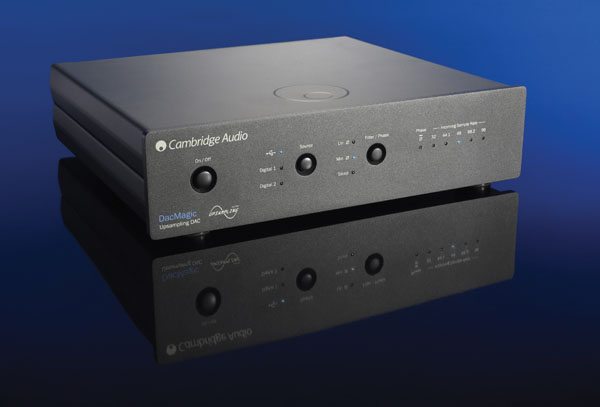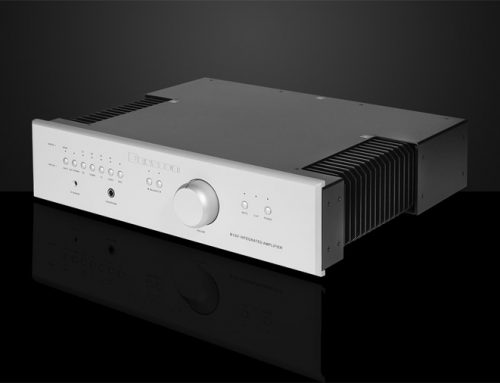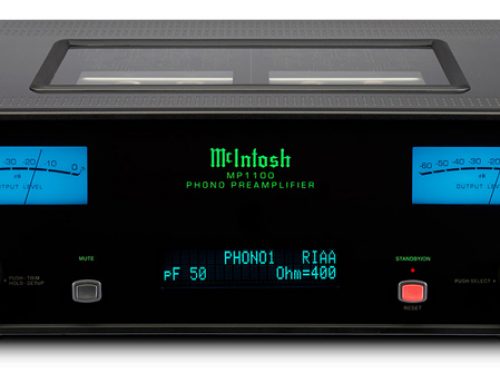It was only a few short years ago that I recall a local group of audio enthusiasts who got together for cold beverage sampling and auditioning of hi-fi audio gear. As a new audio system was being swapped in for auditioning, the conversation turned to the components being installed – a new SACD player and a strange small to medium sized component with only a power button on the front and not much going on in the back. With delight Bill told us about his new toys – a new SACD player and an external companion DAC. The group reaction was mostly muted, yet they were all very interested. While most here were familiar with the basic role that a DAC plays in a CD player or a home theatre receiver, the concept of using an external DAC was brand new to most. It is rather amazing to recall how much has changed in recent memory with regards to audio media. Analog tapes have pretty much disappeared, yet analog records after reaching all time sales lows have reversed the trend and are slowly gaining popularity once again with each passing year. On the digital media side, the CD which can be largely credited with the declining sales slumps of analog media is now also seeing declining unit sales. What’s changed is that more and more of us are moving to computer based storage for our digital music media. This is an interesting time for audio enthusiasts as the growth of digital media formats means that the music of the world is now just a few clicks away and all from the comfort of your home. Better yet is that some of the musical selections are now offered in high-resolution and studio master quality formats. So if you have a basic understanding of the role that a DAC plays as part of a CD player, you can probably see how your computer or tiny hand held media player can benefit from a DAC. Don’t worry if this is all new to you. In this article I explain the basics of a DAC, how it works and what to look for when buying one. At the end of the article I share a list of some popular DAC units that are available on the market with a brief description of their features and limitations.
Let’s start right from the beginning – DAC is short for digital-to-analog converter. The operation of a DAC is just as simple as the name implies, a DAC converts a digital binary code into a line-level analog signal (voltage). This low-current voltage signal will then typically be fed into a preamplifier or an integrated amplifier and from there follow the remaining audio chain. For a detailed description regarding the operation of a DAC, see the online Wikipedia entry for digital-to-analog converter. When sizing up a DAC, the most important specifications that one should consider are the bit depth and sampling frequency limits. If the media you are attempting to play has a greater bit depth or sampling frequency than the digital input is rated for, you will not be able to play the music. 24-bits and 96 kHz will be sufficient for most digital music including most high-resolution media. However, if you are interested in the studio masters that are being offered by an increasing number audiophile recording labels, you should consider a DAC with 24-bit depth and 192 kHz sampling frequency. Many of the DACs that are on the market now offer upsampling which is not to be mistaken with oversampling. When upsampling I have found the best results are achieved by upsampling in whole numbers (i.e. upsample a 44.1 kHz CD to 88.2 kHz or 176.4 kHz). If you will be using a S/PDIF signal as the primary source you will want to use a DAC that features a low-jitter clock for best performance, while a USB signal inherently has no jitter. As with all audio gear you will want to make sure the DAC comes with a good quality, quiet power supply. The inputs and outputs vary significantly from one DAC to another so be sure that the available connections are compatible with your system. Outside the main role of the DAC, which is to perform digital to analog conversion, there may be other additional features such as filters to alter sound, a headphone amp, and a phono and line-level preamplifier. The values of the additional features will depend on your intended uses.
The list below features a number of popular DACs that are currently available, ranging from $300 to $1300. The notes below give a brief overview of each DAC and list the various inputs and outputs, limitations of bit depth and sampling frequency and any extra features that the DAC model has to offer.
Musical Fidelity V-DAC – $299 (approx.)
The small and plain looking Musical Fidelity V-DAC is a 24-bit/192kHz upsampling DAC. There are digital inputs for coaxial, optical and USB data streams at the rear and the analog output is via a set of RCA jacks at the front. The DAC is powered by a 12V DC external wallwart power supply and for improved performance an upgraded/improved power supply module is available from Musical Fidelity. Despite the bare bones look and lack of extra features the low cost and reports of good performance has made the Musical Fidelity V-DAC a popular choice amongst audio enthusiasts.
Cambridge Audio DacMagic – $499
The DacMagic is a 24-bit/192kHz upsampling DAC with an excellent layout and ergonomics. The DAC features two digital inputs which can be either coaxial or optical and there is a USB input which will allow you to connect a portable media device or a computer. Digital input depth and sampling frequency is up to 24-bits/96kHz however the USB input is limited to 16-bits and 44.1kHz or 48kHz. There are both XLR balanced and RCA unbalanced analog outputs. The DacMagic uses a large external wall-wart power supply.
Alpha Design Labs GT40 DAC (by Furutech) – $495
Don’t let the name fool you as the Alpha Design Labs GT40 DAC is a lot more than just a DAC. In addition to the 24-bit/96kHz DAC the GT40 also offers a built-in headphone amplifier with a front panel output and volume control as well as a selectable moving-magnet / moving-coil RIAA phono stage. What makes the GT40 even more unique is that the phono stage includes an analog-to-digital converter (ADC) that will allow you to digitally record your LPs at 24-bits/96kHz. The signal inputs of the DAC are limited to USB for digital and RCA for the phono input. Analog output is provided via a pair of RCA connectors located at the rear of the unit. See the December/January 2010/2011 issue of CANADA HiFi for a full review of the Alpha Design Labs GT40 DAC.
Music Hall DAC25.3 – $595 (approx.)
The Music Hall DAC25.3 is 24-bit/192kHz upsampling DAC which also includes a headphone amplifier with volume control. The rear panel includes four digital inputs (optical, coaxial, balanced and USB) and both balanced and unbalanced analog audio outputs. The USB input will accept 24-bit/96kHz data. The headphone jack and volume control are at the front, but note that the volume control is for the headphone output only. This DAC is quite different from the rest in this list in that is uses a 6922 vacuum tube in the output stage.
Musical Fidelity M1DAC – $699 (approx.)
European manufacturer Musical Fidelity was one of the first companies ever to build a DAC and from that lineage comes the M1DAC. The M1DAC will lock on to any S/PDIF signal up to 192kHz and the input sampling frequency is displayed on the front panel. The DAC will upsample to 24-bit at 192kHz. There are four digital inputs; coaxial, optical, balanced and USB. The USB input is however limited to a maximum 16-bit/48kHz datastream. The DAC features a choke regulated power supply which results in a very low noise floor.
Benchmark Media Systems DAC1, $995 (approx.) and DAC1 USB, $1295 (approx.)
The Benchmark DAC1 is a 24-bit/192kHz digital to analog converter that also includes an internal headphone amplifier with dual front-panel headphone jacks. There are three digital inputs on the rear for coaxial, optical and XLR. The DAC1 has both balanced and unbalanced analog outputs that can be switched between calibrated and variable which will also allow the DAC1 to function as a simple 2-channel preamplifier with the volume control on the front panel. The DAC1 USB model retails for $1295 and includes a USB 1.1 port which will accept audio data directly from a computer at bit depths of up to 24-bits, but the USB sampling rates are limited to 96kHz.
Rega Research DAC – $1095
The Rega DAC is a 16/20/24-bit at 32kHz to 192kHz digital to analogue converter. The DAC features two isolated coaxial inputs, two optical inputs and an isolated USB input. All the connections are at the rear and analog output is via a set of RCA jacks. The controls for the Rega DAC are at the front of the unit and there are 5 user selectable digital filters to alter the sound to your liking. High quality parts are used throughout the DAC. A full review of the Rega DAC is available in the April/May 2011 issue of CANADA HiFi.






